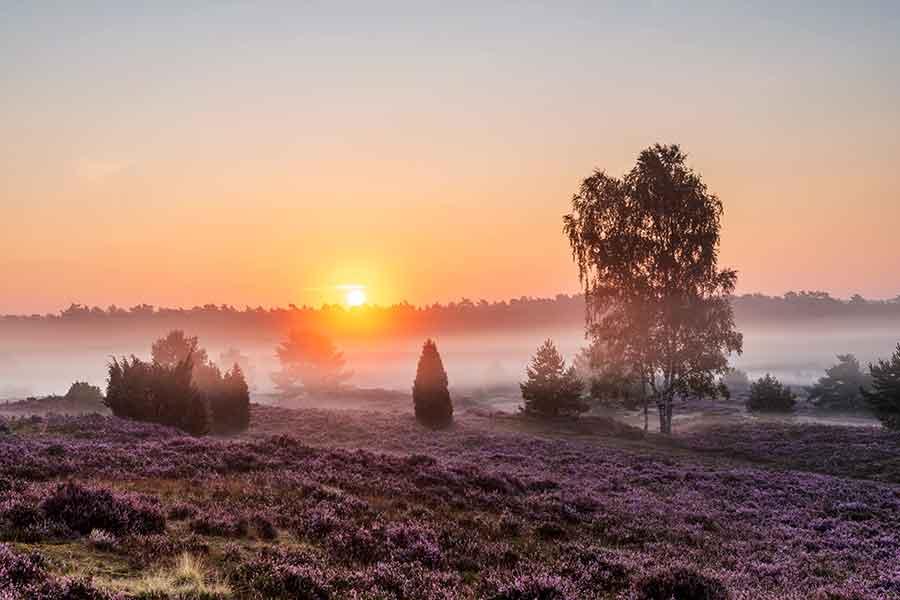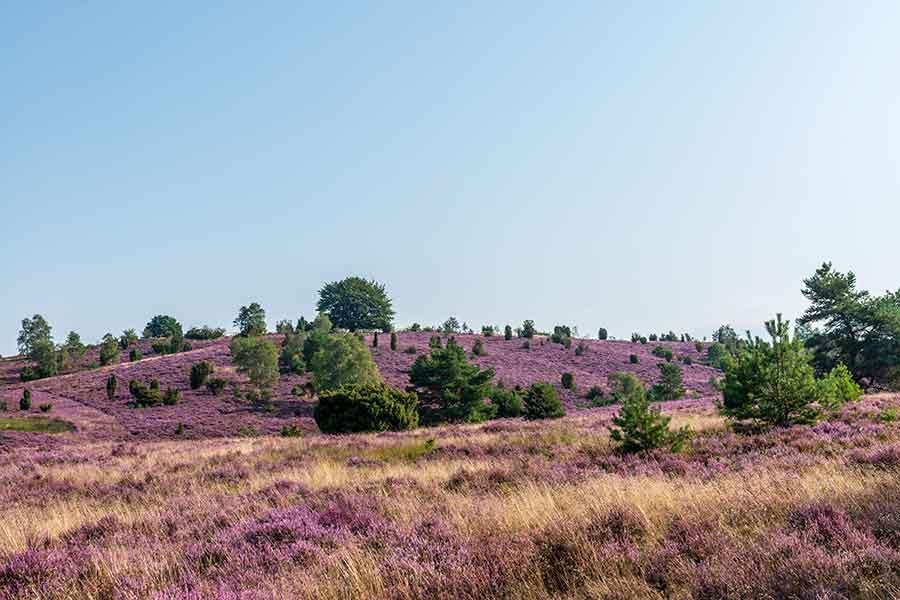CHECK The magic of the heather bloom
All you need to know about the heather bloom on Lueneburg Heath











When does the heather bloom?
The heather (Calluna vulgaris) blooms from the beginning of August until mid-September if climatic conditions are evenly balanced. An old 'heathen' rule of thumb says: The heather blooms from 08.08. to 09.09. every year! You can keep an eye on the current stage of the heather bloom with our Heather Blooming Barometer. We keep track of each phase of the bloom from July to September and publish new photos in the Heather Bloom Barometer on our website nearly every day.
Where does the heather bloom?
Europe's largest traffic-free nature reserve, the Lueneburg Heath surrounding the Wilseder Berg, comprises the largest interconnected heath areas in Central Europe (Totengrund, Steingrund and Undeloh Heath). These areas have been protected nature reserves since 1921. Hikers starting from Undeloh, Egestorf, Doehle, Niederhaverbeck and Oberhaverbeck can enjoy glorious outings in this incomparable countryside.
Lueneburg Heath: The car-free nature preserve Lueneburg Heath, the largest interconnected heath area in Central Europe, is situated at the heart of the Lueneburg Heath nature reserve. The heath towns of Niederhaverbeck, Oberhaverbeck, Döhle and Undeloh are ideal starting points for a hike, bicycle tour or horse and carriage ride in the Lüneburger Heath nature reserve.
Südheide Nature Park: The heath areas surround the heath towns of Müden (Oertze), Fassberg, Hermannsburg and Unterluess.
We have attached an overview map of Lüneburg Heath showing the individual heath areas as a free download for you.
No moorland sheep, no heather bloom
The moorland sheep, also know as the Heath Police, are of elementary importance to the heather bloom. The sheep eat shoots and small plants as they graze through the heath and, in doing so, give the heather the space its needs to develop. The heath would otherwise turn into grassland or woodland and the heather would wither. The moorland sheep also trample the spiders' nests between the heather plants so that the heather bees can pollinate the flowers without any trouble. A prime example of natural interplay.